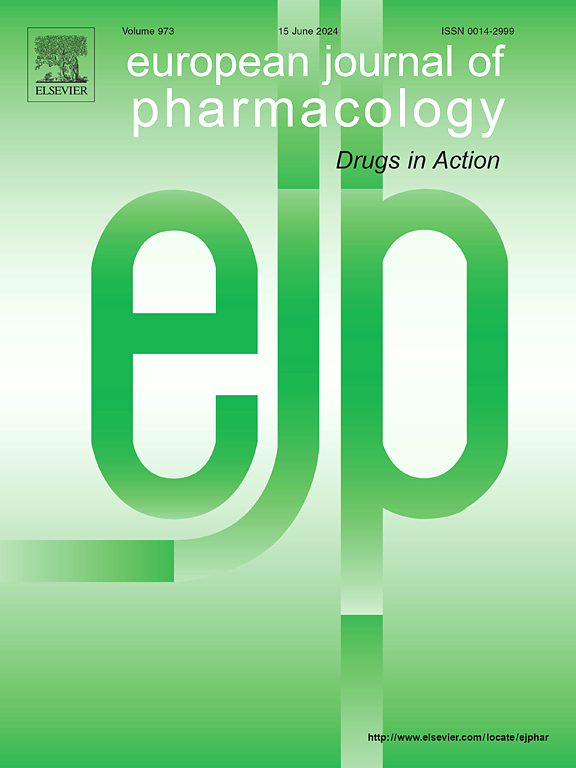红细胞生成素替代物 ARA290 可抑制坐骨神经损伤后 schwann 细胞中 NLRP3 炎性体的活化
IF 4.2
3区 医学
Q1 PHARMACOLOGY & PHARMACY
引用次数: 0
摘要
周围神经损伤的修复是一个迫切需要解决的关键问题。先前的研究表明,促红细胞生成素(EPO)及其延长肽在神经系统疾病中表现出有益的作用。在我们的研究中,我们证明了EPO和焦谷氨酸螺旋B表面肽(pHBSP,也称为ARA290)在大鼠坐骨神经挤压损伤模型中抑制早期炎症反应并促进功能恢复。我们的实验结果表明,坐骨神经损伤后,雪旺细胞发生了明显的炎症反应,EPO和ARA290处理后,雪旺细胞中NLRP3炎性体的激活受到抑制。我们的研究进一步证明,EPO和ARA290通过抑制NF-κB磷酸化和减少活性氧(ROS)的产生来抑制雪旺细胞NLRP3炎症小体的激活。综上所述,EPO和ARA290通过抑制NLRP3炎性体的激活促进坐骨神经损伤后的修复和再生。本文章由计算机程序翻译,如有差异,请以英文原文为准。

ARA290, an alternative of erythropoietin, inhibits activation of NLRP3 inflammasome in schwann cells after sciatic nerve injury
The challenge of repairing peripheral nerve injury is a critical issue that needs to be addressed urgently. Previous research has shown that erythropoietin (EPO) and its prolonged peptides exhibit beneficial effects in neurological disorders. In our study, we demonstrated that both EPO and pyroglutamic acid helix B surface peptide (pHBSP, also known as ARA290) inhibit the early inflammatory response and promote functional recovery after sciatic nerve crush injury in rat models. Our experimental results demonstrate that significant inflammatory response occurred in Schwann cells after sciatic nerve injury, and that the activation of NLRP3 inflammasome in Schwann cells is inhibited after EPO and ARA290 treatment. Our study further demonstrated that EPO and ARA290 inhibit the activation of NLRP3 inflammasome in Schwann cells by inhibiting NF-κB phosphorylation and reducing reactive oxygen species (ROS) production. In summary, EPO and ARA290 promote repair and regeneration by inhibiting the activation of NLRP3 inflammasome after sciatic nerve injury.
求助全文
通过发布文献求助,成功后即可免费获取论文全文。
去求助
来源期刊
CiteScore
9.00
自引率
0.00%
发文量
572
审稿时长
34 days
期刊介绍:
The European Journal of Pharmacology publishes research papers covering all aspects of experimental pharmacology with focus on the mechanism of action of structurally identified compounds affecting biological systems.
The scope includes:
Behavioural pharmacology
Neuropharmacology and analgesia
Cardiovascular pharmacology
Pulmonary, gastrointestinal and urogenital pharmacology
Endocrine pharmacology
Immunopharmacology and inflammation
Molecular and cellular pharmacology
Regenerative pharmacology
Biologicals and biotherapeutics
Translational pharmacology
Nutriceutical pharmacology.

 求助内容:
求助内容: 应助结果提醒方式:
应助结果提醒方式:


